The US manufacturing sector is undergoing a historic construction boom
Let's explore what's happening, and what it means for the energy transition
This whole post, we’re going to be looking at a data set from the US Census Bureau. Specifically, we’re looking at US construction spending across different economic sectors.
We’re going to zoom in on the manufacturing sector, since something pretty wild is going on over there.
US total construction spend
We’ll start with a view of total construction spending in the US since January 2002. In April 2023, which is our most recent data point, US construction spend was at a $1.9 trillion annual rate.
We see that spend bottomed in February 2011, coming out of the global financial crisis.
Look at the COVID dip in early 2020. It’s barely recognizable. While the pandemic was a huge roadblock for much of the economy, it was only a blip on the radar for construction.
From February 2011 through February 2023, US construction spend grew at an 8% compound annual growth rate (CAGR). For comparison, US nominal GDP grew at a 5% CAGR over the same period.
In other words, construction spending has been an important source of economic activity in the US for over a decade now.
Residential versus nonresidential construction spend
Next, let’s divide total construction spending into two macro segments – residential and nonresidential. That’s what we have in the chart below.
We see the bursting of the housing bubble starting in 2006, where the solid blue residential line turns dramatically downward, which ultimately drives the onset of the global financial crisis.
Of course, residential construction spend takes a huge hit over the next several years, then lingers at the bottom from 2009 through 2012.
Starting in 2013, residential construction spend launches into a sustained recovery, that’s briefly interrupted by a brief downtown in 2018. Again, we barely see a dent when the pandemic lands in early 2020.
Importantly, residential construction spend peaks in May 2022, and has since retreated. In the first four months of 2023, it has plateaued right around an $850 billion annual rate.
As we might expect, nonresidential construction tells us a different story.
We see continued increases in nonresidential construction spend through the bursting of the housing bubble, followed by a downturn during the worst of the global financial crisis.
Starting in 2013, the trajectory moves up and to the right, much like it did for the residential side.
But in this case, we don’t see a plateau. Instead, nonresidential construction spend has continued to climb, and has moved nearly vertically since the middle of 2022.
In February 2023, nonresidential construction spend crossed the $1 trillion annual rate threshold, and as of April 2023 is approaching $1.1 trillion.
With these dynamics in mind, we can turn to a different look of residential versus nonresidential construction spending. The chart below shows the total fraction of construction spend allocated across these two macro segments:
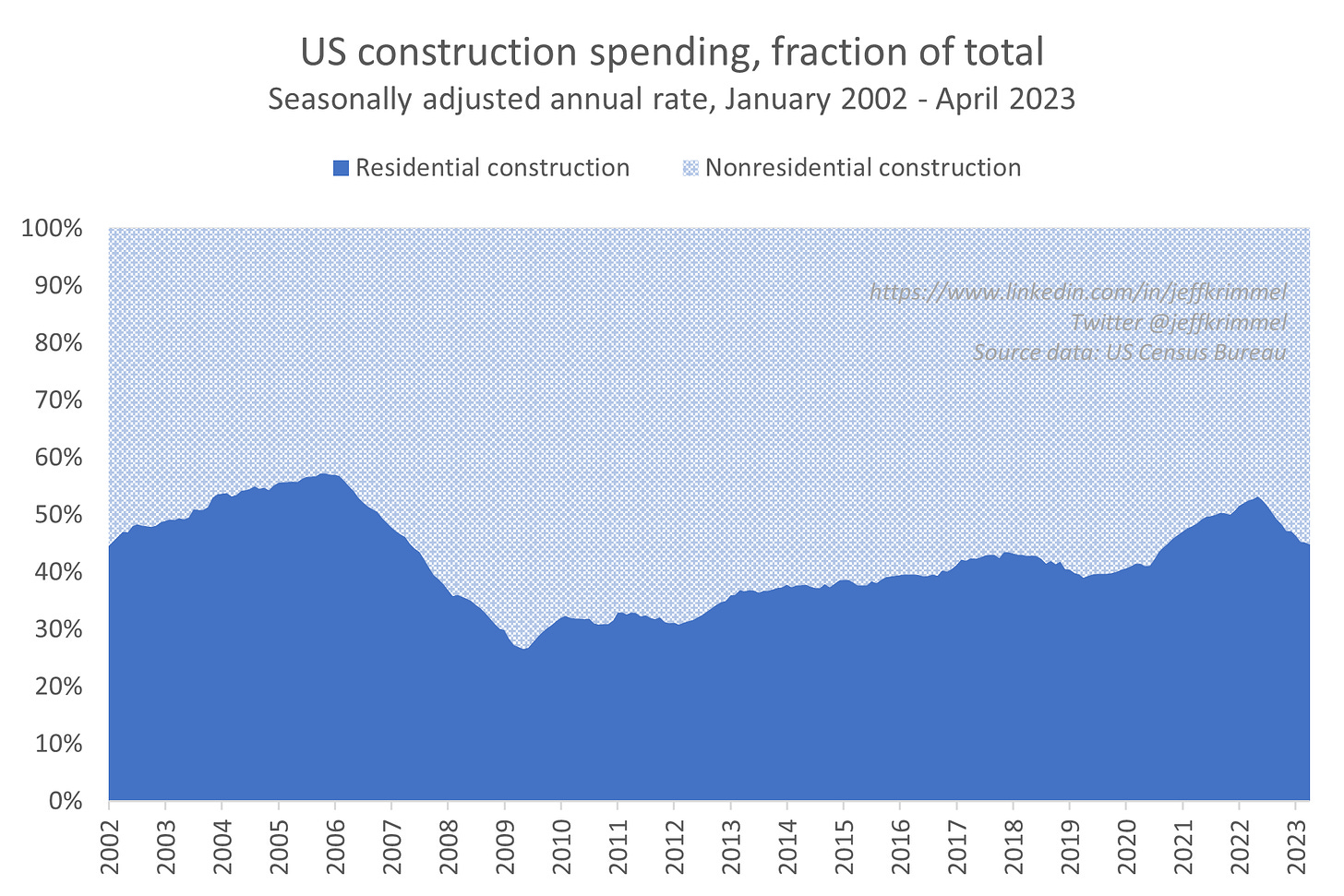
In a few short years, residential spending reached its bottom, just below 30% of total spend in early 2009.
It recovered steadily through the middle of 2022, after which its own plateau, combined with the historic burst in nonresidential spend, drove the residential spend contribution back down to around 40%.
Nonresidential construction spending by sector
We’ve looked at US total construction spend in aggregate. We’ve also looked at it divided into its two macro segments – residential and nonresidential.
Let’s go a bit further into the nonresidential side. That’s where we’ll find manufacturing.
The chart below shows the seasonally adjusted annual rate of spend for the top 5 nonresidential sectors, from January 2002 through April 2023, again in millions of US dollars. Specifically we’re looking at manufacturing, commercial, highway and street, power, and educational.
Here is where we start to see the historic nature of recent construction spend in the manufacturing sector.
Notice from 2002 through the middle of 2022, manufacturing almost always had the lowest spend of these five sectors.
But over the past 12 months, manufacturing spend has absolutely exploded.
In fact, as recently as May 2022, manufacturing came in fifth place out of this five-sector cohort. But in only four months, by September 2022, manufacturing was the biggest spender of this group.
And the gap has only grown since.
By April 2023, construction spend in manufacturing is at annual pace of nearly $190 billion, or $60 billion higher than the commercial sector, which sits in second place.
Before we talk about what’s happening and what it means for energy, let’s look at one more data-driven view. The chart below shows the year-over-year change in spend for these 5 nonresidential sectors.
We see that construction spending in manufacturing is on an absolute tear. It’s the largest spending nonresidential sector, and it’s also the fastest growing. That’s the case not just for this group of 5, but for all the sectors that live inside the nonresidential segment.
What’s happening, and what it means for energy
What’s going on here? Why is there such a historic construction boom occurring in the US manufacturing sector?
Three pieces of federal legislation are playing important roles here:
• The Infrastructure Investment and Jobs Act, i.e. the bipartisan infrastructure bill, signed into law in November 2021
• The CHIPS and Science Act, signed into law in August 2022
• The Inflation Reduction Act, also signed into law in August 2022
The US manufacturing sector is responding to these new federal incentives to onshore and reshore critical elements of our supply chain.
The Inflation Reduction Act has significant energy provisions, which is creating a huge ramp in investment around a number of carbon-mitigating energy solutions.
In short, we’re already seeing industry’s response to these newly created incentives.
Construction spend in manufacturing has never been higher. And no sector has ever seen construction spend accelerate at this combined pace and scale. It’s unprecedented in every way.
The next American manufacturing renaissance is definitely upon us.
It’s not going to look and feel like past iterations. It has its own character. And based on the recent acceleration in spend, it’s coming with considerable pace.




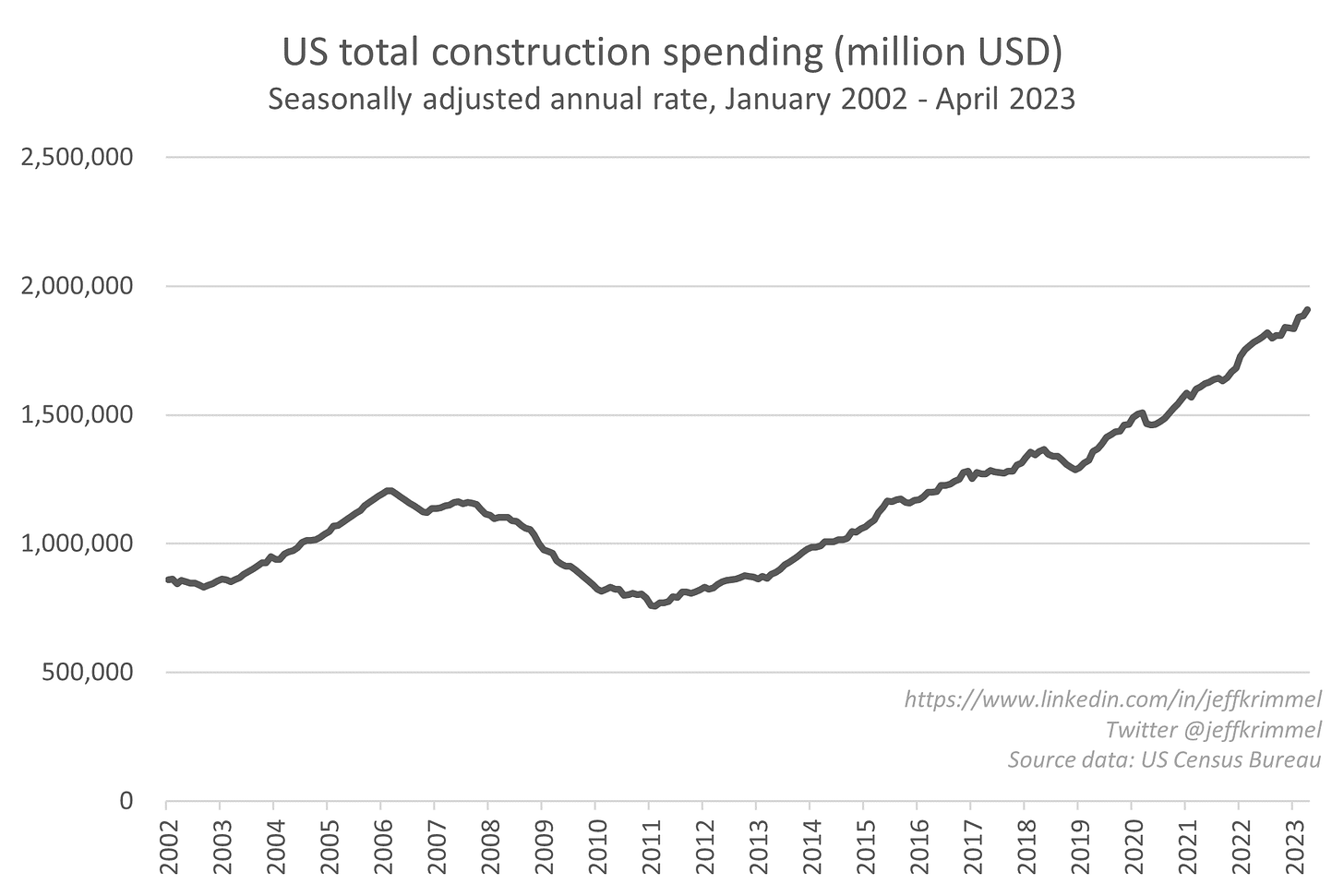
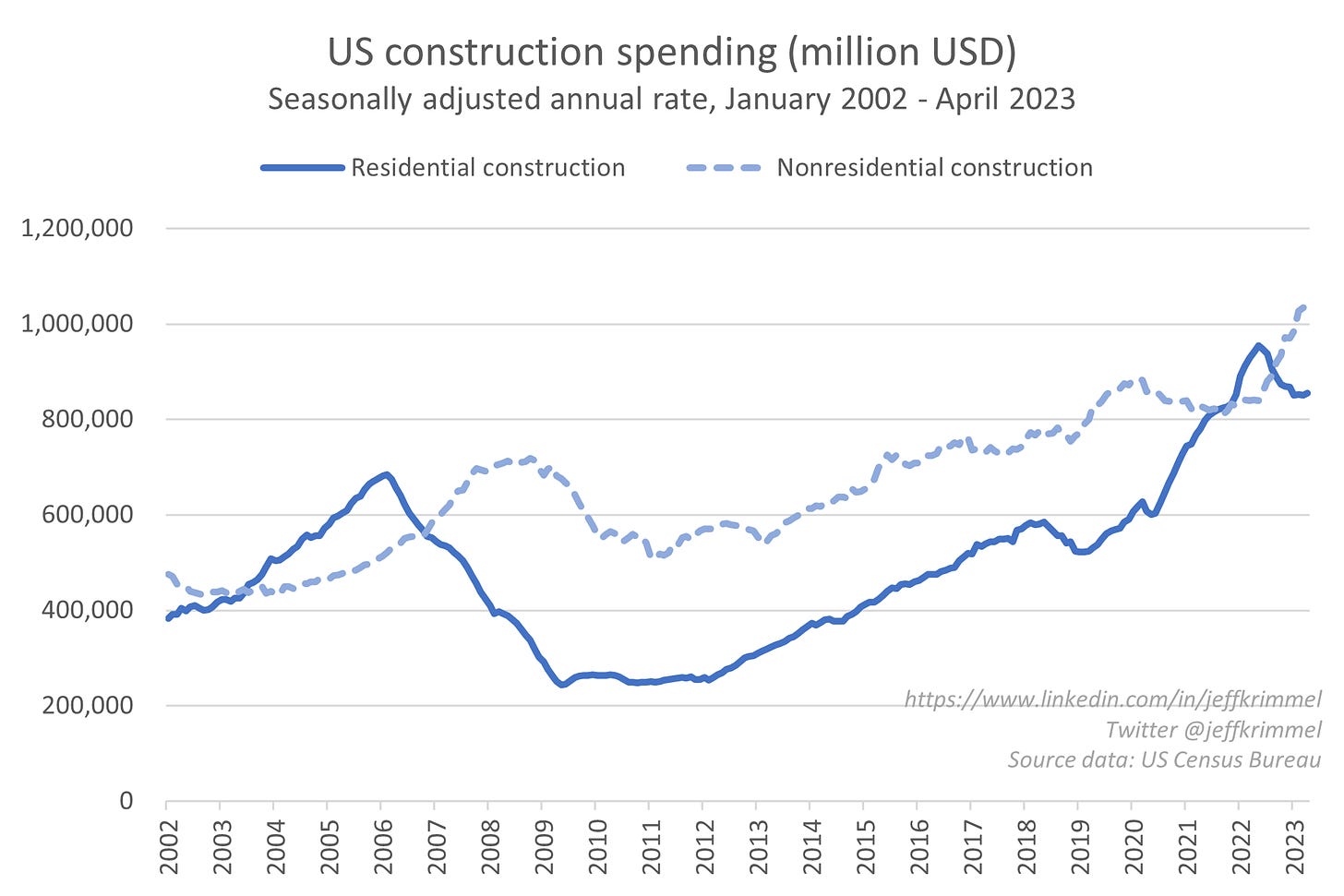
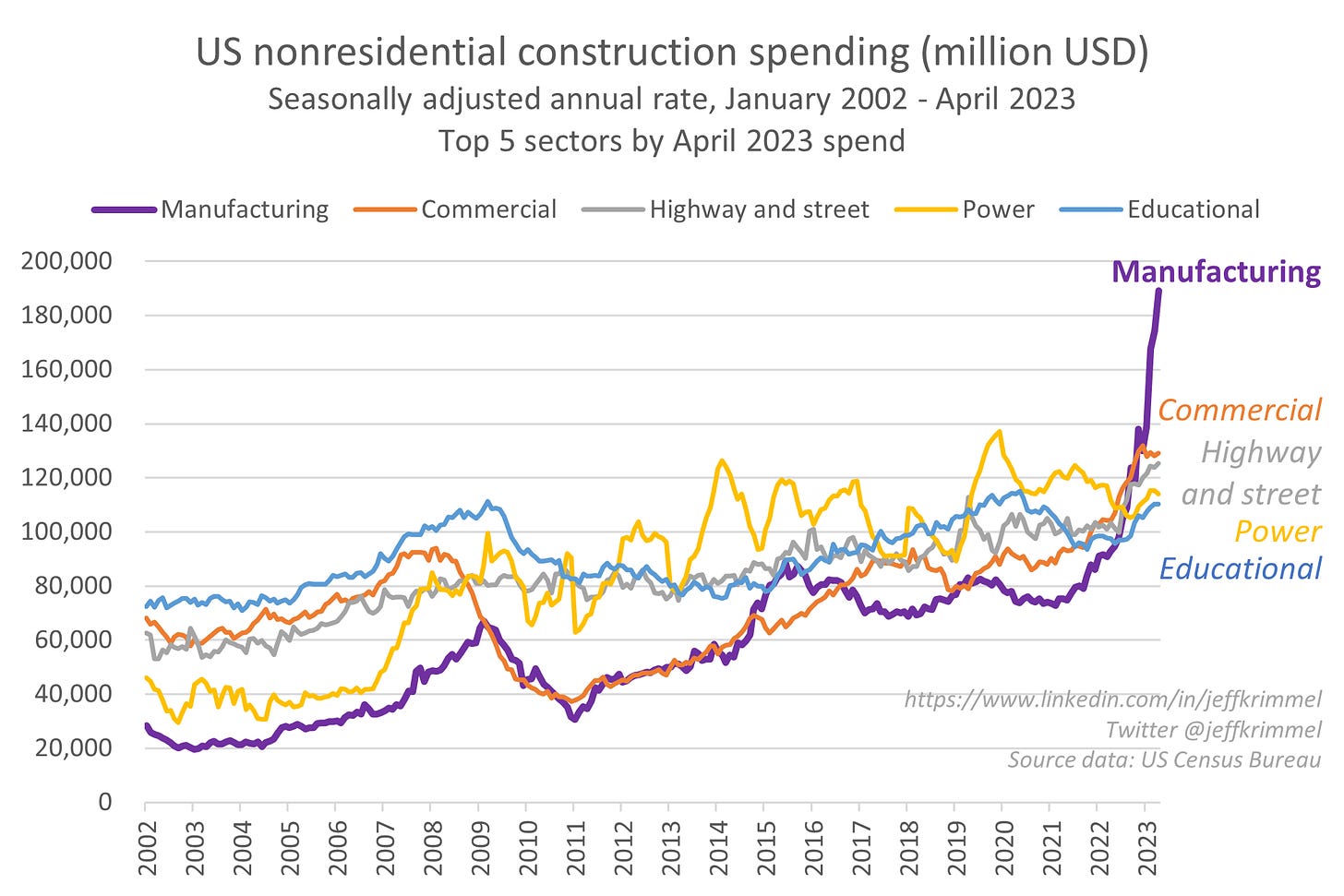
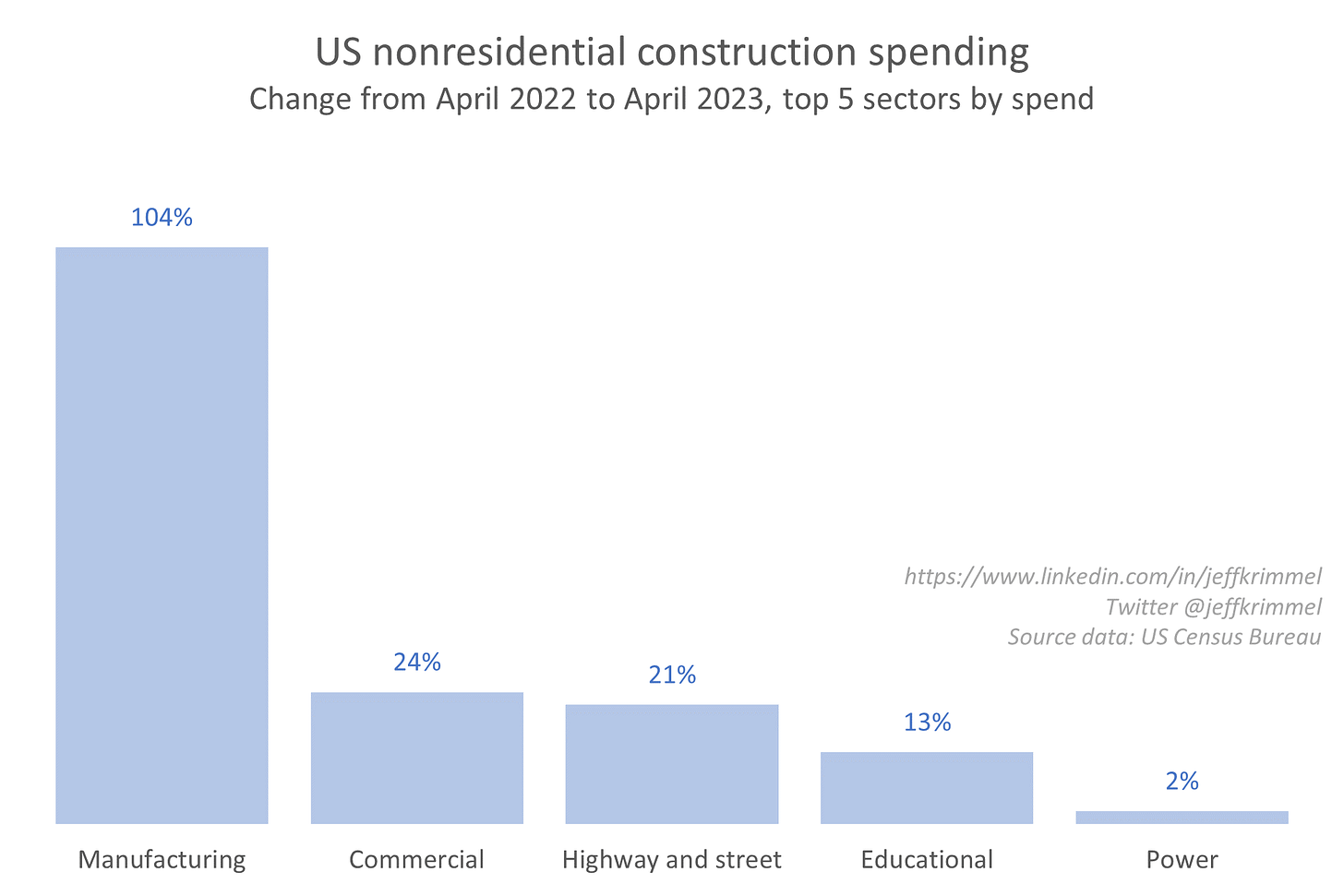
Which industry within the energy transition do you think will "boom" next or receive the most spending? EV infrastructure? Solar? Something else?